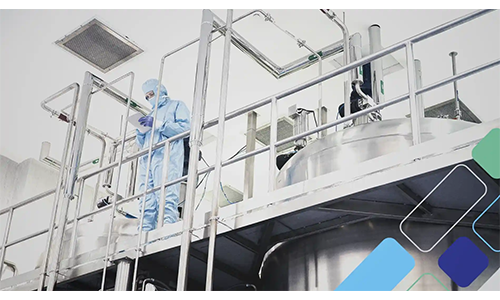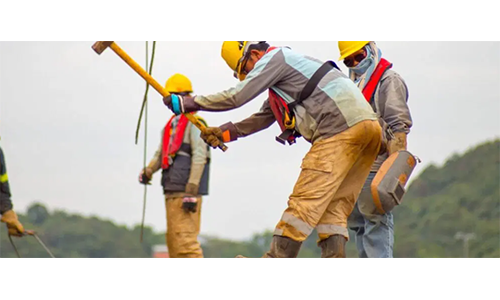What follows the realization of the relationship between safety and business excellence is a significant, yet unfocused, increase in the yearning for a “safety culture.”
Whether internal or client-driven, having a desire for such a reality is only the first step. Knowing where to focus your energy is step two. Internalizing the capability to achieve and repeat sustainable results is the final step. Regrettably, most organizations struggle to make it past the first step.
Core Values Cannot Be Delegated
“The way we do things around here,” the most common layman’s definition of culture, reaches into most areas of operations. Like quality or customer service, safety is but one element of your overall organizational or occupational culture. Establishing excellence in any area of operations does not occur if the element is dictated, delegated or becomes the responsibility of a single group or individual. An organization will never reach Six Sigma, a measure of quality excellence, if quality is a managed function. Similarly, companies will struggle to create a sustainable safety culture if it does not become “the way we do things around here.”
Many organizations have removed the phrase “safety is our top priority” from their vernacular and moved towards safety as a core value, largely due to the realization that priorities are competitive and regularly change. Values are something you fight for and only become real when they are reinforced at or near the point of decision. For safety to truly become one of the organization’s core values, it can never be delegated.
Alignment with the Board of Directors
Workers pay attention to what their supervisors, managers and employers pay attention to. This truism works both up and down throughout the organization. Reinforcing values cannot be accomplished without support from the organization’s most senior decision-makers. Unfortunately, many boards of directors establish expectations for specific safety results, leading some of the best-intentioned leaders to turn to manipulation to achieve the targeted metrics.
A common variable found among industry leaders in safety are clear, defined safety roles, responsibilities and expectations, which are established first for C-level executives and then cascaded collaboratively throughout every level in the organization. Over the past 3 years, a series of workshops and follow-up for board members to establish such cascading expectations for multiple organizations have reported annualized gains in the significant improvement of leading and lagging indicators.
A Transformational Focus
Organizations achieving a culture of safety excellence realize that the value lies not in the quantity of safety efforts, activities or programs, but in the quality and focus of the energy. Accomplishing the wrong objectives in the most efficient manner possible is an obvious waste of time. Yet the average organization continues to push safety efforts, reactively and proactively, at the wrong target. Organizations finding themselves on the tipping point of excellence in safety culture and performance do not recognize such gains just by increasing safety efforts, but by applying them in the right direction.
For companies that are serious about achieving safety excellence, having a clear and concise direction for efforts becomes the epicenter of their efforts. What one thing, if focused on over the next 90 days, would provide transformative improvement? While this might appear like an abstract strategy, hundreds of organizations have benefited from such a change in thinking. Many industry leaders maintain a focus on small incremental improvements over time; the outliers perpetually identify transformational targets. (Mathis, Terry L., Managing Safety: “S.T.E.P.S. (Strategic Targets for Excellent Performance in Safety).”)
Visible Results and Accomplished Goals
Multiple studies have confirmed what many have intuitively known all along: Visible progress towards established goals is a more effective motivator than money or personal recognition for the average worker in a world-class operation. As organizations significantly improve safety, the incident data, once vital, starts to lose the statistical significance valued by the organization. Companies cannot base proactive efforts on random trends; moving toward achievement metrics and away from failure metrics becomes increasingly vital.
Working with hundreds of safety committees has led to the discovery of a significant opportunity that can be leveraged in the workplace: bragging. While this runs the risk of sounding egotistical, experience has demonstrated that if people do not know of your team’s successes, why would they want to support you or join in the fight? The most frequently found barrier to employee participation is perception of ineffectiveness, due largely to lack of knowledge of successes. How many safety committee successes can your employees remember? Work aggressively to ensure that any employee, when asked, can name three important accomplishments born from the recent safety efforts of your organization. Without this, the vital ownership and participation will continue to suffer.
Measurement is Friendly
Are those items that are being measured getting managed? Or are those measurements producing fear, avoidance behavior or manipulation? Organizations will experience barriers in achieving excellence due to the wrong measurement indicators. Simply put, we tend to measure what we do not desire, rather than what we want. When attention largely is concentrated on understanding the dreaded events that occurred, it is natural for our human emotional defense mechanisms to deploy. Someone is blamed.
Measurement needs to be viewed as a tool that helps us, rather than one that prompts mistrust. How do employees currently view measurement? Does performance feedback excite them, or do they fear it? Fear around measurement requires prompt attention, as it is pivotal to the ability to move the organization towards transformation.
Programs Inherently Lead to Pushback
Transforming a culture always will be different for each organization. Thus, the need for the internal capability to focus, achieve results, celebrate and re-focus is critical. Dependency on external assistance for programs and processes should diminish over time.
Sustainable safety cultures do not come in a box. There are no magical formulas, silver bullets or other mysterious methodologies one can purchase that create a desirable outcome. Creating a culture that provides sustainable value, and continues to focus on value-add, only occurs through a crystal-clear aligned focus and internal passion for excellence at all levels of an organization.
Creating a sustainable safety culture is not about what you do; it is how you do it. You know your culture. Rather than trying to first change your operations to fit a program, make the approach fit your operations. It shouldn’t be surprising that this is the most effective and sustainable approach to achieve sustainable value-add for your operations. This will put you on the path to establishing a sustainable safety culture.
Shawn Galloway is the president and COO of ProAct Safety, an international safety excellence firm. As an executive safety coach, motivational speaker and advisor and strategist, he has assisted hundreds of international organizations to achieve and sustain excellence in safety, culture and operational performance. He also is the host of the highly acclaimed weekly podcast series, Safety Culture Excellence. He can be reached at 800-395-1347 or [email protected].




















































































